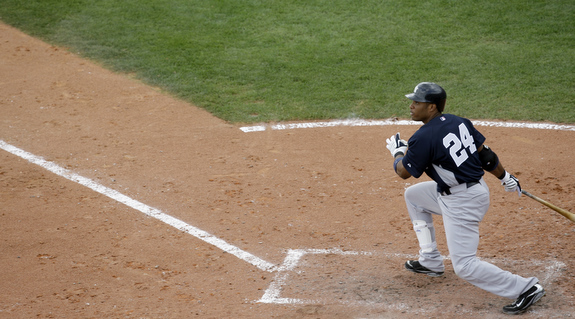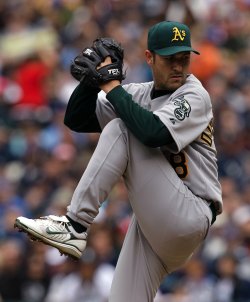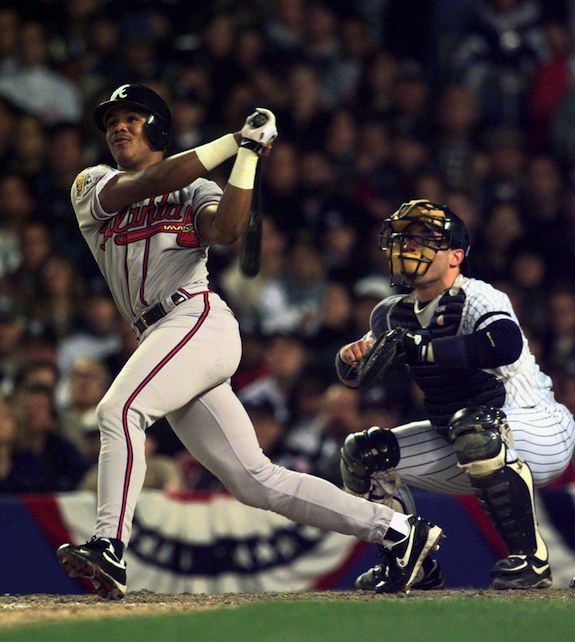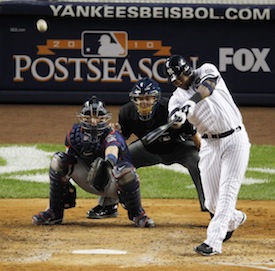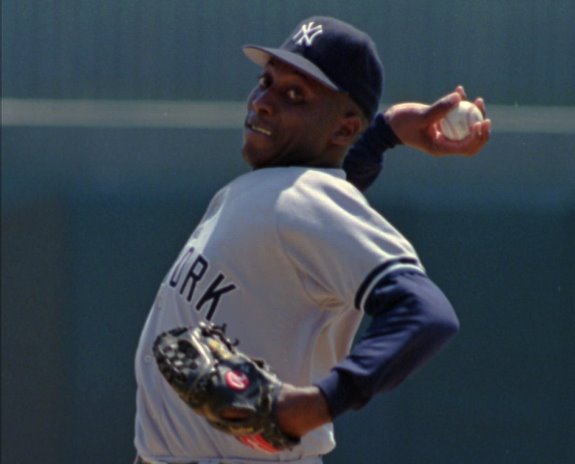It feels as though we haven’t come to fully appreciate the 2010 Yankees. I can understand why. The 2009 team spoiled us, and while the 2010 team made it close to a repeat World Series berth, they fell a bit short. They also fell a bit short in the AL East. That’s one reason why this off-season just doesn’t have the same feel. There doesn’t seem to be anything to reflect on and enjoy — whereas at this point last year we were still basking in the 2009 season.
Today I’d like to look back on the 2010 season and find some of the positive aspects. The Yankees will return almost all of their starters, so this can also help us look forward to the 2011 season. Here’s how the 2010 Yankees ranked on offense by position, using my favorite offensive stat, wOBA.
Catcher: 4th
Despite Francisco Cervelli getting 317 PA, the Yankees still managed to finish behind only the Braves, Reds, and Phillies in offensive output by catchers. Cervelli’s .359 OBP certainly helped matters, while Posada’s .454 slugging gave them a nice balance.
First Base: 12th
This was certainly one of the year’s disappointments. A number of first basemen had standout years, while Teixeira experienced one of his worst. We can only look forward to better things in 2011.
Second Base: 1st
This comes as little surprise, since Robinson Cano took nearly every rep at second base. Only one other team, the Marlins, came within 20 points of the Yankees’ — read: Cano’s — .389 wOBA from second base. Now just imagine Robbie’s season if he didn’t slump all September long.
Third Base: 11th
This was at about the disappointment level of Teixeira, though third base was certainly not all on A-Rod. He managed a .363 wOBA, while the team as a whole was at just .327. Eduardo Nunez, Ramiro Pena, and Kevin Russo just aren’t adequate stand-ins. Those 26 A-Rod-less games at third certainly hurt.
Shortstop: 13th
The Yankees finished 2nd among shortstops in wOBA in 2009, but dropped all the way to 13th in 2010. Jeter himself ranked eighth among shortstops in wOBA, but some teams, the Red Sox among them, got added production from players who did not qualify for the batting title.
Left Field: 10th
Much of Brett Gardner’s value lies in his glove — UZR rated him the best left fielder in the game, while DRS had him at second — he still managed to hit a little bit in 2010. Overall, Yankees left fielders produced a .334 wOBA, which kept them in the top third of the league. With Gardner’s glove, that’ll play.
Center Field: 5th (tie)
Even though he experienced a rough debut in the Bronx, Granderson still brought the offense, particularly in terms of power. The tie is with the Blue Jays, a team that also got a ton of power out of the center field spot. The Yankees, though, got a bit more balance, as their center fielders hit .262/.355/.423, while the Jays’ hit .269/.324/.496.
Right Field: 13th
Nick Swisher himself had a .377 wOBA, but everyone else who played right field for the Yanks — Austin Kearns, Randy Winn, Colin Curtis, Greg Golson, and Chad Huffman — dragged down that number. It’s still a top half finish, but not quite as impressive as you might think given Swisher’s performance.
DH: 5th (AL only, obviously)
Despite losing their DH after just a few weeks, the Yankees still managed to get a .348 wOBA out of the spot. The top team DH, the Red Sox, amounted to just .357 wOBA, so the discrepancy wasn’t huge.
Team: 1st
You might not think it by the individual rankings, but the Yankees finished with the best team wOBA in the league. They’ve actually been in that spot in four of the last five seasons. We were spoiled when the team demolished the competition in 2009, when the team wOBA was .366 and the next closest was .352, but the 2010 team could certainly mash.
Team leader: Robinson Cano
It’s tough to beat a .389 wOBA. In fact, only 11 hitters did it in 2010.
